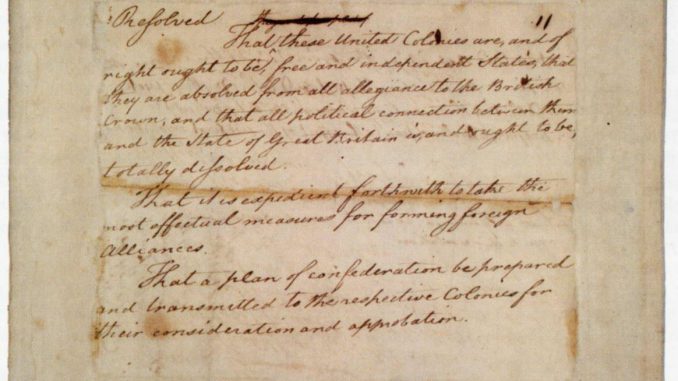
Richard Henry Lee and America’s Steps to Independence
Richard Henry Lee was a prominent statesman from Virginia. Though not a firebrand, like Patrick Henry, or quite as prolific as Thomas Paine, Lee became known as a powerful orator and writer. His words, spoken and in print, were important cogs in the wheels that churned toward America’s independence from England.
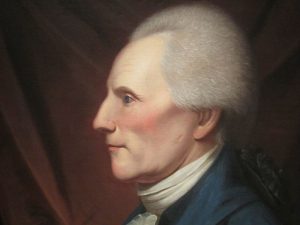
Lee was born in Virginia and following home tutoring and then schooling in England, he returned to America and served as a Justice of the Peace for Westmoreland County. In 1758, he was elected to the Virginia House of Burgesses and was later a delegate to Continental Congress.
The Steps Toward Independence
Following the Seven Years War, England was eager to gather money to pay for their war and perhaps even more eager to establish their stronghold on the American colonies. England passed a number of tax measures upon the colonies, starting with the Stamp Act of 1765 and, later the Townshend Acts of 1767.
Richard Henry Lee was a supporter of the Stamp Act at first and expressed interest in collecting the fees of the Stamp Act for the British. Leaders in several colonies strongly opposed these taxes, noting they were being taxed without any representation in England’s government. Lee was censured by the Virginia House of Burgesses for his initial stance and, recognizing his error, recanted his earlier support for the Stamp Act.
The Westmoreland Resolves
Reconciled with the House, Lee then wrote the Westmoreland Resolves of 1766, which was a document–
“…binding citizens to support their lawful sovereign, George the Third, BUT only so far as consistent with the preservation of the colonists rights and liberty.”
In 1765, King George III’s enforcement of the Stamp Act began. In response, the Lee brothers, led by Richard Henry, rallied 115 men of Westmoreland County at Leedstown on the Rappahannock River in Virginia, a few miles south of Lee’s family home. All signed the Westmoreland Resolves, authored by Richard Henry Lee.
The signers of the Westmoreland Resolves did solemnly bind themselves, at the risk of their lives and fortunes, to restore and protect whosoever is the target of an attempt to deprive him of his liberty or property. The document threatened “danger and disgrace” to anyone who paid the tax.
Among the signers were the four Lee brothers (Richard Henry, Thomas, Francis Lightfoot, and William Lee) and the four Washingtons (Charles, Samuel, Laurence and John Augustine, all brothers of George Washington). The signing of the Westmoreland Resolves was one of the first deliberate acts against King George III. The Resolve also placed both Richard Henry Lee and the state of Virginia at the lead of the coming revolution.
Sedition or Inspiration
Some colonists opposed the Westmoreland Resolves and considered them seditious and too great a challenge to the king. But, the Westmoreland Resolves publicly and officially objected to the Stamp Act and were an important step toward independence. Later, Lee’s Westmoreland Resolves gave guidance to those who wrote the Declaration of Independence.
Parliament eventually repealed many of these taxes in 1770, except for the tax on tea. Britain maintained their tax on tea to demonstrate its presumed right to tax the colonies without their representation. These actions sent a clear warning to the colonies that the British government intended to reign supreme over the colonies.
Colonists React

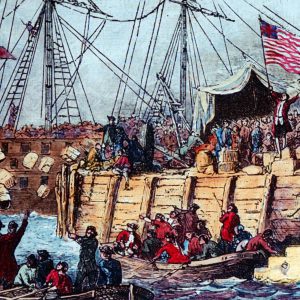
The colonists responded to the tax on tea initially by circumventing the taxes by smuggling tea in by Dutch traders. The British responded by passing a Tea Act to aid the East India Company, giving it a monopoly on all tea exported to the colonies. This blocked the colonies from all other sources for tea. The monopoly led to the colonists’ continued anger against Parliament. Eventually, this led to The Boston Tea Party, the December 1773 retaliation by colonists which resulted in 342 chests of tea to be taken from ships and dumped into the water.
Responding to The Boston Tea Party, the British Parliament sought to punish the colonists and passed a series of laws the American colonists labeled “The Intolerable Acts”.
The Boston Port Act, Administration of Justice Act, Massachusetts Government Act, the Quartering Act and the Quebec Act were all passed by Parliament in 1774 to punish Massachusetts for destroying the tea. Colonists viewed the acts as unfair retaliation against the Massachusetts. It was Parliament’s intent to punish and isolate Massachusetts from the other colonies. Instead, the punishment served to unite the colonies to act against a common enemy.
Intolerable Acts
The Intolerable Acts prompted patriot leaders and colonial legislatures to call for a general congress of the thirteen colonies to meet to determine how to resolve thee acts by Parliament and King George III. This congress was known as the first Continental Congress, which met briefly in Philadelphia from September 5 to October 26, 1774. Among those involved were Peyton Randolph, who served as the chair of the first Continental Congress, and delegates, such as George Washington, Patrick Henry, John Adams and Richard Henry Lee, along with other Founders.
Though some of the colonies wanted to demand their rights to representation, initially they did not want to separate from Britain. Establishing trust and unity and a common goal between the colonies required weeks of discussion.
The Congress decided upon a number of measures in response to the heavy hand of the British, including a boycott of British goods and a declaration of rights stating only America’s colonies could tax themselves. A demand was also made to King George III to reverse the Intolerable Acts. They also decided to reconvene in May 1775 to determine if further action was necessary.
The “Dye” is Cast
King George III’s response was to ignore the colonies and the grievances and demands of the Continental Congress.
“The Dye is now Cast, the Colonies must either submit or triumph.”
-King George III to Lord North, September 1774
Between the first and second Continental Congress, there were growing hostilities and skirmishes between colonists and British troops. These battles were considered the start of the Revolutionary War in April 1775. The most significant battles occurred at Lexington and Concord, Massachusetts.
The second Continental Congress met, as planned in May 1775 and continued to meet in the following months. New members of the second Congress included Benjamin Franklin, Thomas Jefferson, John Hancock and John Jay.
The second Continental Congress established significant measures to separate the colonies from the British Empire. Their efforts included establishing a navy, a postal service, a currency and means of borrowing money and an army under the command of George Washington.
The Lee Resolution
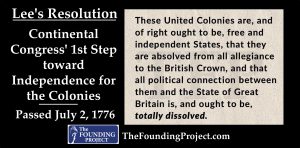
Then, on June 7, 1776, Richard Henry Lee put forward the “Lee Resolution”, which officially resolved that the colonies ought to be free and independent states. The Lee Resolution was passed on July 2, 1776 and served as a main catalyst for The Declaration of Independence. The passage of the Lee Resolution was accepted as an important measure taken by the Continental Congress. Newspapers heralded the act..
The Pennsylvania Evening Post reported on July 2:
This day the CONTINENTAL CONGRESS declared the UNITED COLONIES FREE and INDEPENDENT STATES.
The Pennsylvania Gazette followed suit the next day with its own brief report:
Yesterday, the CONTINENTAL CONGRESS declared the UNITED COLONIES FREE and INDEPENDENT STATES
The Lee Resolution, proposed by Richard Henry Lee and seconded by John Adams:
Resolved, That these United Colonies are, and of right ought to be, free and independent States, that they are absolved from all allegiance to the British Crown, and that all political connection between them and the State of Great Britain is, and ought to be, totally dissolved.
That it is expedient forthwith to take the most effectual measures for forming foreign Alliances.
That a plan of confederation be prepared and transmitted to the respective Colonies for their consideration and approbation.
The “Die” is Cast
Two days after the Lee Resolution was passed, The Declaration of Independence was approved by the Continental Congress. Lee was one of the signers of the Declaration of Independence. This Congress also prepared the Articles of Confederation, which became the first U.S. Constitution in March 1781, after being sanctioned by all the states.
“The die is cast…it seems to me the Sword is now our only, yet dreadful, alternative…”
-Abigail Adams, wife of John Adams, in a letter to a friend, February 1775
The American Revolutionary War dated from April 19, 1775 through September 3, 1783.
Lee Continued to Serve
Richard Henry Lee served in the Virginia House of Delegates during the War for Independence. After the war’s end, he served in Congress under the Articles of Confederation and was unanimously elected president of the Congress. Though Lee supported the 1787 Federal Convention in Philadelphia, he worried the new Constitution being proposed had too much power over the states and lacked a bill of rights.
Lee and perhaps also Melancton Smith of New York are considered to be the authors of a series of called “Letters of a Federal Farmer”. This series became a textbook for the opposition to the Constitution, unless it had a bill of rights. Lee was a strong advocate for the Bill of Rights.
In 1789, with the new Constitution ratified, Lee served as Virginia’s senator and was an important supporter of the Bill of Rights, helping its passage. Lee retired from the Senate and public service to his home in Chantilly, Virginia and died on June 19, 1794 at the age of 62. He died about 28 years after he proposed the Westmoreland Resolutions and just over 18 years after he proposed the Lee Resolution and signed the Declaration of Independence.
Respected Speaker
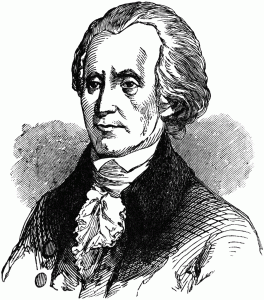
Over the decades and throughout America’s fight for independence, Richard Henry Lee was a powerful voice. His peers said his speeches were often powerful, academic and sometimes spontaneous.
“The great orators here,” wrote John Adams, “are Lee, Hooper and Patrick Henry.”
St. George Tucker of Virginia described Lee’s speeches:
“The fine powers of language united with that harmonious voice, made me sometimes think that I was listening to some being inspired with more than mortal powers of embellishment.”
Lee and Adams became a powerful team, often meeting with Adams cousin, Samuel Adams, at Lee’s sister’s house in Philadelphia.
Though often forgotten in the list of America’s most prominent Founders, Richard Henry Lee’s resolutions, writings and speeches inspired significant steps in America’s quest for Independence.
Also, see The Founding Project’s articles about the Articles of Confederation and watch for the coming article on the Declaration of Independence:
https://thefoundingproject.com/forgotten-articles-confederation/
https://thefoundingproject.com/articles-confederation-part-2-confederacy/
https://thefoundingproject.com/articles-confederation-complete-text/
Sources: https://www.britannica.com/event/Boston-Tea-Party…..https://www.historyisfun.org/learn/learning-center/what-were-the-intolerable-acts/…..https://www.history.com/topics/american-revolution/american-revolution-history…..https://www.britannica.com/topic/Continental-Congress…..https://www.biography.com/political-figure/richard-henry-lee…..https://en.wikipedia.org/wiki/Richard_Henry_Lee…..https://www.ourdocuments.gov/doc.php?flash=false&doc=1…..https://www.dsdi1776.com/signers-by-state/richard-henry-lee/…..http://www.bedinger.org/westmoreland-resolutions.html

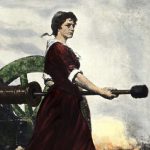
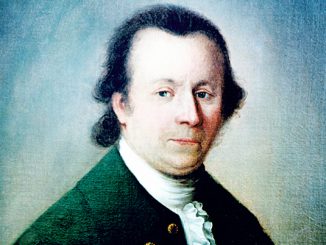
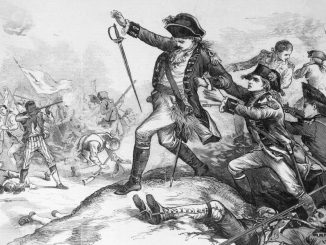

The Crown really screwed up here,probably due to hubris. You have to wonder what the result would have been had the British just allowed for each of the colonies to elect and send an MP to Parliament?
The taxes were not onerous at all,and there was good reason to impose them. The British did,after all,spend a good deal on their militray in order to protect the Colonists during the Frnch and Indian war and it did need to be paid for. I think that the Colonists been able to be a part of the decision to impose taxes that they would have agreed.